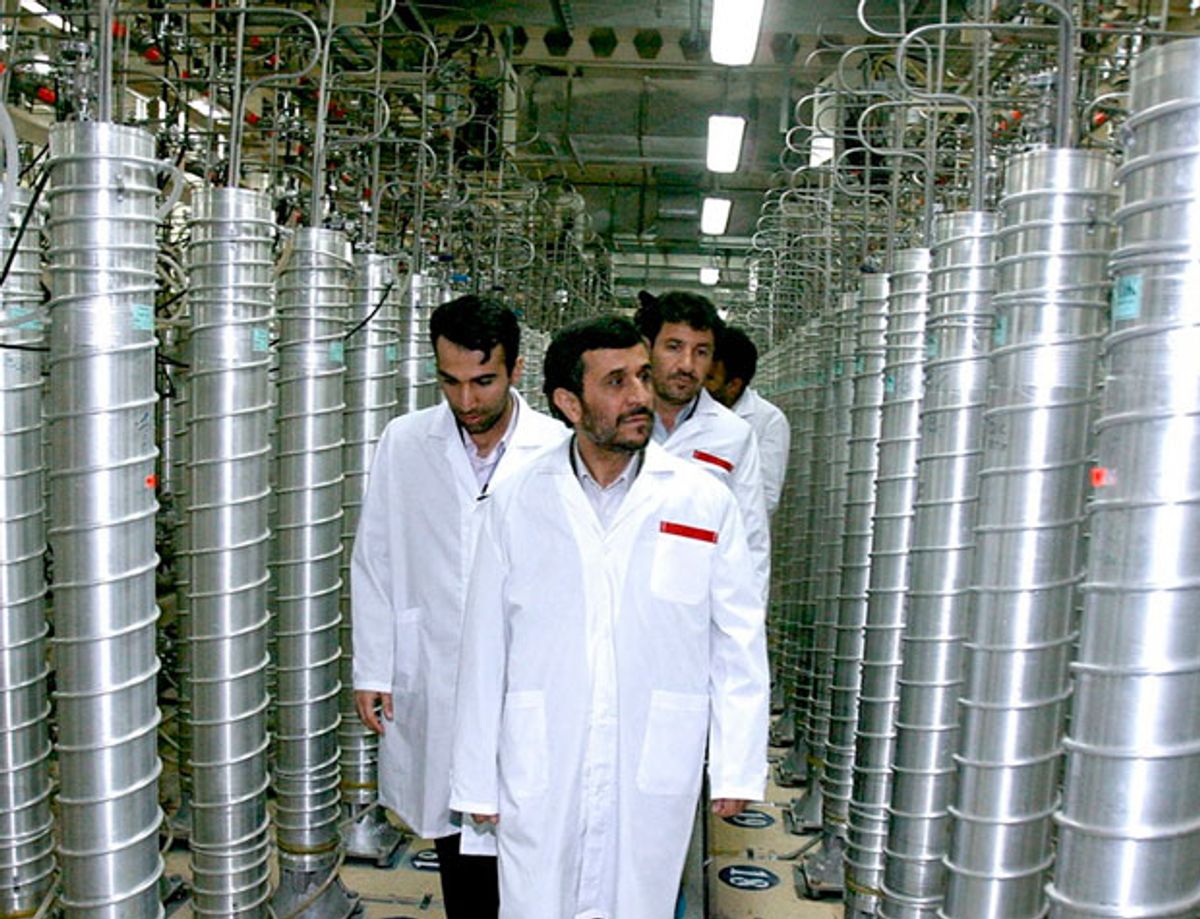Ordinarily it would be big energy news if one of the world's larger emerging market economies were to announce plans to build sixteen nuclear reactors, representing a substantial fraction of such undertakings. Sixty nuclear power plants are under construction worldwide, and about 160 are planned.
But here's the rub: The country that announced last week that it would build 16 new reactors is Iran. Given the long-standing impasse over Iran's uranium enrichment program and well-founded suspicions that its leadership wishes to attain a "breakout" capacity to build nuclear weapons, the reactor plan could be nothing but a cover for a covert military program.
In principle, the so-called P5+1 talks with Iran that resumed yesterday could cast light on that issue and ultimately legitimize Iran's nuclear energy program. But are there any real prospects of the talks succeeding?
On Monday, in a discussion of Iran hosted on Monday by the Arms Control Association and broadcast on C-SPAN, career ambassador Thomas Pickering said he would be "willing to put a little money on a positive outcome." However, former Iranian nuclear negotiator Hossein Mousavian, currently at Princeton University, said that for the Iran talks to be successful, the United States would have to adopt a respectful rather than threatening attitude and stop coupling peaceful rhetoric with escalating sanctions. Meeting those hypothetical conditions, which Mousavian also spelled out in the Financial Times, would not be trivial.
Suspicions run deep on both sides. Because of Iran's proven subterfuge, starting with the discovery ten years ago that it had secretly built a large uranium enrichment plant at Natanz, the P5+1 negotiators--the permanent members of the U.N. Security Council plus Germany--will not be quick to credit any Iranian promises. The Iranian leadership, for its part, is inclined to believe that the United States really is bent on regime change, not honest talk.
The complexity of Iran's domestic political situation, and the impending collapse of its major regional ally, the Syrian regime, also are factors that probably bode poorly: Iran's leaders, whoever they really are, will not want to appear weak. On the other hand, it's clear that international sanctions against Iran are biting sharply, and that the leadership would like to get out from under them.
In another important development last week, the International Atomic Energy Agency reported that Iran is installing a new generation of more advanced uranium centrifuges at Natanz, which would not appear to bode well either. But why are the better centrifuges being put in the relatively vulnerable Natanz facility, rather than at the more impregnable Fortow factory that Iran started to tunnel several years ago?
Conceivably, Iran could be preparing the ground for a retreat from its costly covert program: It could quietly accept international restrictions on production of high-enriched uranium, while expanding production at the well-safeguarded Natanz facility of low-enriched uranium for a growing civilian nuclear power sector. While easing the burden of sanctions and gaining diplomatic legitimacy, Iran's leadership could tell the people that a strong nuclear program continues.
But maybe, as we say here in the United States, that train of thought is just another case of "whistling Dixie."
Photo: Reuters
Iranian President Mahmoud Ahmadinejad visits the Natanz nuclear enrichment facility, 350 km (217 miles) south of Tehran, April 8, 2008.



